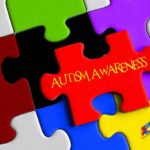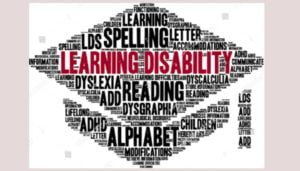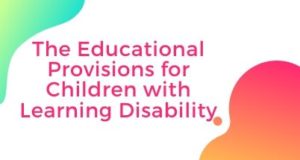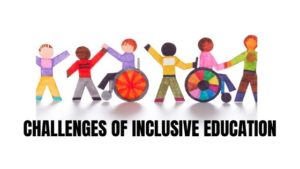Concept of Autism
Communication is an active process by which individuals exchange information and convey ideas. Language, a set of codes adopted by a specific community, is the means by which an individual communicates his/her thoughts, ideas and/or feelings through vocal/ non-vocal modality. Communication impairment can occur when an individual lacks the ability to use language codes. There are many types of communication impairments; the most common among them in children is a condition known as ‘Autism’ or Autism Spectrum Disorder (ASD).
Autism is a disorder characterized by impairments in communication and social development. The condition is highly variable and may be accompanied by certain behavioural features as well as severe learning difficulties. The varied manifestations of this condition make assessment and intervention a challenging task for speech-language pathologists/therapists.
Definition of Autism
Autism and related disorders are a phenomenologically related set of neuropsychiatry disorders. These conditions are characterized by patterns of both delay and deviance in multiple facets of development. Although many explanations for the social, cognitive and linguistic symptoms of autism have been explored, the exact mechanism by which it operates is still not understood. Typically, however, the onset is in the first few months of life.
Characteristics of Autistic Children
Newsom (1976) has described six frequently observed characteristics of children with autism.
- Apparent sensory deficit: We may move directly in front of the child, smile and talk to him, yet he will act as if no one is there.
- Severe effect isolation: Attempts to love and cuddle and show affection to the child encounter a profound lack of interest on the child’s part.
- Self-stimulation: These children exhibit repetitive stereotyped acts, such as rocking their bodies when sitting, twirling around, flapping their hands at the wrists or humming.
- Tantrums and self-mutilators behaviour: The child sometimes bites himself to bleed, he beats his head against the wall, beats his face with fists. Sometimes the child’s aggression will be directed outward against parents
- Echolalic and psychotic speech: These children are mute, i.e., they do not speak or utter only simple sounds. These children repeat what you speak to them. This echolalic speech may be delayed at other times.
- Behaviour deficiencies: An 5 or 10-year-old child may behave like a one-year-old child. He may not play with toys, but put them in his mouth and tap repetitively with his fingers.
Majority of case studies have revealed that children with autism have
- onset before 30 months of age
- normal physical development
- good cognitive potential
Disturbances in:
- Developmental rates and sequences in the areas of motor, social adaptive and cognitive skills.
- Responses to sensory stimuli. Hypo- or hypersensitivity in audition, vision, touch, motor, smell and taste.
- “speech-language, cognition and nonverbal communication, including autism, echolalia, failure to use abstract terms, pronominal reversals and atypical vocabulary development.
- The capacity to appropriately relate to people, events and objects including lack of social behaviour, affection and appropriate play.
- Emotion with interruption of the idiosyncratic or pervasive use of objects
- Self-Stimulatory behaviour
- An obsessive desire for the maintenance of sameness
- Extreme autistic aloneness and withdrawal tendency.
- Language abnormalities
Language is a complex communication activity, which is used as a tool for expression of feelings and emotions. This social act of language requires coordinated functioning of many faculties including intelligence, thought, reasoning, neurological and motor skills. There is much impairment in language associa with the condition of autism. The most common among them are:
- Impaired verbal comprehension and expression
- Poor understanding of questions
- Echolalia (repetition of messages-immediate, delayed and/or mitigated)
- Impairments in the use of abstract concepts including emotions
- Stereotyped verbal utterances
- Impaired skills in reading, writing and mathematics
In conclusion, This is probably the unheard soliloquize of a special child with ‘Autism’. The child understands himself much better than anybody else so also the mother. Mothers of such children are often reported to have commented about their child being ‘special’, but are unable to convince the ‘society’ about his/her ‘special’ skills and finally end up with the Herculean task of seeing a metamorphosis in her child. Do we take pride in the child for whatever he/she is or are we prejudiced towards the ‘special’ child?? Time is ripe to introspect and understand ourselves so that we play a fair game with these children.
Autism FAQs
What are the 3 main characteristics of autism?
1. problems with Social Interaction
2. Problem with Communication
3. Obsessive interests and repetitive behaviors.
What is the main cause of autism?
The main cause of autism are
1.Genetic Mutation
2. Low Birth Weigh
3. Having an immediate family member with Autism
What is mild autism?
The Autism is a Developmental Disorder. The Symptoms ranges from Mild to Severe
When World Autism Awareness Day celebrated?
World Autism Awareness Day Celebrated on 2 April every year
What is the symbol for autism?

The Autism Awareness Puzzle Ribbon is the most enduring and recognized symbol of the autism community in the world
References
- Morton Ann Gernsbacher, E., 2020. Language And Speech In Autism. [online] PubMed Central (PMC). Available at: <https://www.ncbi.nlm.nih.gov/pmc/articles/PMC5260808/> [Accessed 4 April 2020].
- Maria Mody, J., 2020. Speech And Language Impairments In Autism: Insights From Behavior And Neuroimaging. [online] PubMed Central (PMC). Available at: <https://www.ncbi.nlm.nih.gov/pmc/articles/PMC3862077/> [Accessed 4 April 2020].


